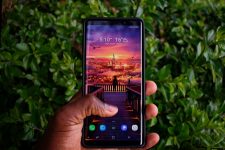
If you got a rooted Android device, you can customize it in awesome ways. Below are 20 build.prop tweaks that can not only fix certain issues on Android devices but can also enable several hidden Android features. Keep reading to learn more.
As we’ve previously discussed, build.prop is the single most important file on Android if you measure importance by the number of potential customizations this single file holds. Editing the build.prop is not a difficult process either, yet, we have a dedicated guide for it. Just in case this is your first time messing with the build.prop file, and you don’t know what blunders it can unfold on your device, be sure to check out how to Edit build.prop on Android. Listed below are 20 build.prop tweaks that you can do.
20 build.prop Tweaks to Customize Android
1. Make your phone ring as soon as you get a call
Android devices generally wait to verify a connection before they start ringing. This build.prop tweak disables the waiting time and makes your phone ring as soon as you get a call. The waiting time isn’t that long, though. In any case, just add these lines at the end of your build.prop file.
ro.telephony.call_ring.delay=0
ring.delay=0
2. Disable built-in error reporting
Add the following lines at the end of the file.
profiler.force_disable_err_rpt=1 profiler.force_disable_ulog=1
3. Fix black screen issue after a call
In case you experience a few seconds long blackout after each call, this could be an issue with your proximity sensor. Edit the following lines to your build.prop to the values shown below.
ro.lge.proximity.delay=25 mot.proximity.delay=25
4. Enable Auto-rotation on the Lock Screen
Auto-rotation on the lock screen was present on earlier Android devices. But with the latest versions, this has been disabled on smartphones, while it is still present on Android Tablets. However, if for some reason you wish to have it back, just add the following line to the bottom of your build.prop.
lockscreen.rot_override=true
5. Enable Auto-rotation on the Home Screen
The above still holds true for home screens on Android smartphones versus Android tablets. If you have a custom Launcher installed, this shouldn’t be a problem for you at all. But if you use an Android or OEM stock launcher, add the following line at the bottom of your build.prop file.
log.tag.launcher_force_rotate=VERBOSE
6. Improve your Internet connection
Most Android devices use their carrier’s DNS service by default. Google also has a set of free DNS services that anyone can use. And isn’t it obvious whose DNS services would be better when it comes to Google vs mobile network carriers? You can add the following lines to your build.prop to force your device to use the more reliable Google DNS services.
net.dns1=8.8.8.8 net.dns2=8.8.4.4
7. Improve Scrolling
This build.prop tweak modifies the maximum and minimum fluid velocity to improve scrolling animations and speed. Just add the following line to the bottom of your build.prop
windowsmgr.max_events_per_sec=150 ro.min_pointer_dur=8 ro.max.fling_velocity=12000 ro.min.fling_velocity=8000
8. Improve Call quality
ro.ril.enable.amr.wideband=1
9. Enable or disable On-screen Navigation keys
Quite a few Android devices come with on-screen software navigation keys, and many also come with hardware capacitive touch buttons. For whatever reason, if you wish to disable the on-screen navigation keys, add the following line to your build.prop.
qemu.hw.mainkeys=1
On the other hand, in case your hardware keys are acting up or for any other reasons, you want to enable software navigation keys, just change the value of the above line to ‘0’ and add it to the bottom of the build.prop
qemu.hw.mainkeys=0
10. Change screen DPI for bigger or smaller text and icons
Changing the DPI is one of the most popular and favorite build.prop edit among modders. So much so that this single edit has several dedicated apps on the Play Store for those who don’t want to get their hands dirty and do the job themselves. A higher DPI value results in a smaller UI, smaller texts, smaller icons.
A lower DPI results in a larger UI, larger texts, and larger icons. In the case of less powerful devices, you may notice a performance log when setting the DPI higher, and a performance boost with a lower DPI. Also, you shouldn’t get too playful with this, because if you set a value too high or too low, you might not be able to operate your device at all. Find the following line on your build.prop, and replace the XXX with a value you like.
ro.sf.lcd_density=XXX
Usually, the standard values of XXX are a multiple of 160. That is, 160, 320, 480, 640, etc.
11. Improve Picture Quality
Most Android devices render images at a lower quality to save the processor from the burden. This is in no way a bad quality, just not the top quality that your device can achieve. Although, these days with more powerful processors entering the mid-range and even some budget smartphones, there’s almost always the required power to pull this off. If you think your device can handle rendering images at the best possible quality, add the following line to the bottom in the build.prop
ro.media.enc.jpeg.quality=100
12. Increase the time between WiFi network scans
By default, Android looks for nearby WiFi networks every 15 seconds if your WiFi is turned on. This can be useful if you live in a large house or are at the airport where you move between multiple access points. But most of the time it is usually a drain on the battery. Adding the following line to the end of your build.prop file can help, in case you wish to change the default 15-second policy.
wifi.supplicant_scan_interval=XXX
Here, XXX is the time interval in seconds. So if you want that your device should look for nearby networks only after 2 minutes, replace XXX with 120.
13. Enable faster boot
This a simple build.prop tweak. Simply add the following line at the end of the build.prop file.
ro.config.hw_quickpoweron=true
You will notice a difference the next time you reboot your device depending on your hardware specifications.
14. Keep Back-lit Capacitive Keys on while Screen is On
ro.mot.buttonlight.timeout=0
15. Better Network Signals
This build.prop tweak enables Fast Dormancy, but this also depends on your network provider. Both the Network and the device should support Fast Dormancy. Usually, when your Android device connects to a network, it undergoes certain states to stay connected. With Fast Dormancy disabled, the only available states are connected or disconnected.
In the connected state, the device has to go through all its internal functions anytime there’s a change in the network to maintain the connection. This, of course, uses a lot of resources. Fast dormancy allows the device to cycle through 5 states that use lesser or more power depending on the task at hand. Don’t worry, we wouldn’t go deeper into that. Just add the following lines to your build.prop and you’re good to go.
persist.cust.tel.eons=1
ro.config.hw_fast_dormancy=1
16. Disable USB Debugging notification
persist.adb.notify=0
17. Force 270-degree rotation in all apps
You may have noticed that even with Auto-rotation enabled, some apps would only rotate into a predefined 180-degree span. This is especially true for some games which rotate on the opposite side of where you’re holding your device. It is then your only choice to rotate the device itself. Adding the following line at the end of your build.prop can help.
windowsmgr.support_rotation_270=true
18. Lock the launcher in memory
Some Android devices have a very aggressive attitude towards background apps in order to save RAM or battery. Sometimes often on devices with ample amounts of RAM. That’s called poor RAM management. On some devices, when you press the home button, the launcher has to be loaded all over again with the icons and all. This requires resources of course. In that case, add the following line of code to your build.prop. This will lock the launcher into the RAM memory thus preventing it from being killed.
ro.HOME_APP_ADJ = 1
19. Increase resolution of a panorama image
This will force the panorama mode in the camera app to save the image at a higher resolution. This may not be supported by all phones.
ro.media.panorama.defres=3264x1840 ro.media.panorama.frameres=1280x720
defres is for the full panorama image resolution, consisting of all images while frameres provides the resolution of each frame of a panorama.
20. Disable Android logger – logcat
The Android logging system provides a mechanism for collecting and viewing system debug output. Logs from various applications and portions of the system are collected in a series of circular buffers. But if you’re not a developer, you don’t generally need a log cat. Disabling it can save some disk reads/writes thus improving performance in theory. However, there probably wouldn’t be any noticeable gain.
logcat.live=disable



I’m using iball slide tablet
My system update was disabled by manufacturer by :
ro.miki_ui_remove_system_update=1
I had set it to 0 and then the system update appeared on the settings !
ro.miki_ui_remove_system_update=0
Can not save, error saving.
Which file browser are you using?
file manager, zenui
it can browse root directory.
my device be rooted.
Try Root Browser or Root Explorer.
Also make sure your system is mounted as read and write. Without that you can not make any changes to the system files.
ES File Explorer Pro all the way!
Only if you provide root access to the text editor you can save it.